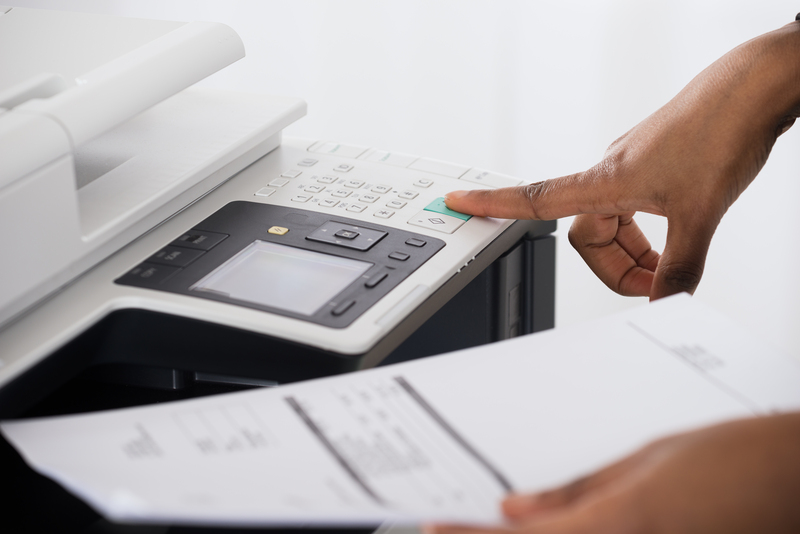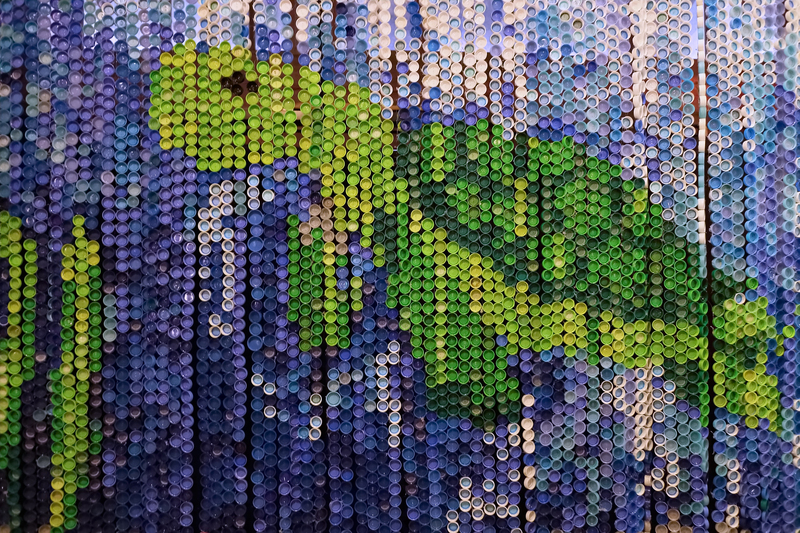Discover the Art of Upcycling and Turn Rubbish into Incredible Finds
Upcycling has emerged as a creative and sustainable way to transform unloved or discarded items into treasures. Unlike recycling, which typically breaks materials down for re-manufacturing, upcycling adds value through smart re-use and artistic flair. Whether you're looking to beautify your home, minimize waste, save money, or embark on a fun DIY project, embracing the art of upcycling is the gateway to turning what might seem like rubbish into truly incredible finds.
Understanding Upcycling: The Basics
Upcycling--sometimes called "creative reuse"--is about taking objects or materials that are no longer needed and transforming them into higher-quality or more useful products. This can range from repurposing old furniture, fashioning artwork from scrap metal, to giving glass bottles new life as home decor.
- Reduces waste in landfills.
- Cuts down on the need for virgin materials.
- Sparks creativity and innovation.
- Offers unique, one-of-a-kind results.

Why Is Upcycling Important?
The rise of consumerism has led to a throwaway culture, producing mountains of waste yearly. By embracing the upcycling movement, we not only protect our planet but also unlock boundless potential for creativity. Upcycling offers benefits including:
- Sustainability: Less energy consumption than recycling or manufacturing from scratch.
- Affordability: Creating stylish items from discarded materials is often cheaper than buying new ones.
- Self-Expression: Each upcycled project reflects personal taste and creative flair.
- Community Engagement: Neighborhoods and groups can come together around upcycling projects.
Discovering the art of upcycling and turning rubbish into incredible finds is more than just a trend--it's a responsible and imaginative shift in how we see the world around us.
The Difference Between Upcycling and Recycling
It's easy to confuse upcycling and recycling. While both contribute to waste reduction, their approaches differ:
- Recycling breaks down materials, often using energy and resources to create something new.
- Upcycling creatively repurposes items, retaining much of their original form but giving them a new function or appearance.
In other words, upcycling focuses on elevating the value of old objects, not just processing them for raw materials.
How to Start Your Upcycling Journey
1. Rethink Rubbish: See Potential Everywhere
To truly embrace upcycling, you must first alter your mindset. Instead of seeing an old chair, think of it as a blank canvas. Instead of throwing away glass jars, imagine colorful vases or storage containers. View every item not as "rubbish", but as a resource waiting to become an incredible find.
2. Gather Essential Tools and Materials
Most upcycling projects only need a few basic tools and supplies:
- Screwdrivers and pliers
- Painters' tape and brushes
- Paints and stains
- Hot glue gun
- Sandpaper
- Scissors and utility knives
- Measuring tape
Optional items include sewing machines, power drills, or specialty glues, depending on your project.
3. Learn and Get Inspired
The world is overflowing with upcycling inspiration. Pinterest, Instagram, YouTube, and DIY websites feature thousands of creative ideas for upcycled home decor, fashion, garden art, and more. Start small, explore upcycling tutorials, and experiment boldly.
Creative Upcycling Ideas: Turning Trash into Treasure
Unlock the hidden beauty in everyday waste with these upcycling project ideas:
Furniture Upcycling: Revamp the Old
- Transform an old door into a stylish dining table or headboard.
- Turn wooden pallets into garden seating, coffee tables, or plant stands.
- Repaint and reupholster chairs and sofas for a modern twist.
- Use drawers from discarded dressers as wall shelves or planters.
Fashion and Accessories: Style Reimagined
- Convert t-shirts into tote bags, headbands, or even braided rugs.
- Turn outdated jewelry into chic new pieces or embellishments.
- Repurpose denim jeans as patched jackets, pouches, or home organizers.
- Decorate shoes and bags with fabric paints, studs, or sequins for a fresh look.
Home Decor: Art from the Unwanted
- Create glass bottle lamps or vases with fairy lights.
- Mount old records or CDs on the wall for retro art pieces.
- Utilize tin cans as planters, lanterns, or desktop organizers.
- Design mirrors framed with driftwood, bottle caps, or mosaics from broken china.
Garden Upcycling Projects: Outdoor Magic
- Convert car tires into colorful flower beds or swings.
- Turn wooden crates into vertical gardens or bench seating.
- Use broken tools, boots, or kettles as quirky planters.
- Craft bird feeders from teacups and saucers.
Kids' Crafts and Toys: Learning Through Upcycling
- Build a dollhouse from cardboard boxes.
- Make musical instruments like shakers or drums from tins and rice.
- Paint rocks or bottle caps for creative board games or art projects.
The Environmental Impact of Upcycling
Upcycling helps conserve natural resources in multiple ways:
- Reduces waste: Less landfill usage lowers soil and water pollution.
- Saves energy: Upcycling requires minimal energy compared to full recycling or manufacturing.
- Preserves resources: Reusing existing materials avoids excessive resource extraction.
By discovering the art of upcycling, we can significantly lower our carbon footprint and influence others to choose sustainability over disposability.
Upcycling for Profit: Turn Your Passion into a Business
The popularity of eco-friendly values has led to a booming market for unique, upcycled goods. Here's how you can monetize your talent:
Identify Your Niche
Sell Through Various Platforms
- Etsy, eBay, or local online marketplaces
- Craft fairs and sustainable markets
- Social media platforms like Instagram and Facebook Marketplace
Share Your Story
- Take before-and-after photos to showcase your upcycling process.
- Explain the environmental impact of your creations.
- Engage with eco-conscious buyers seeking unique, green alternatives.
With dedication and creativity, upcycling can be both an ecological service and a lucrative venture.
Tips for Successful Upcycling Projects
Start Small and Grow Gradually
Begin with simple projects, such as painting jars or repurposing clothes, before moving on to furniture restoration or complex builds. Master basic techniques and build confidence as you progress.
Experiment with Colors and Textures
Use paints, fabrics, and hardware to give old items a modern or eclectic twist. Mixing textures and color palettes adds personality to your upcycled creations.
Combine Functionality and Beauty
Make sure every piece serves a purpose--whether it's a functional table, stylish lamp, or eye-catching planter.
Practice Safety First
Always follow safety precautions. Wear gloves, use tools as instructed, and work in well-ventilated areas when using adhesives or paints.
Join Upcycling Communities
Online groups and local workshops offer support, resources, and collaborative inspiration for upcyclers at all levels. Sharing successes and challenges creates a strong, supportive network.
Famous Upcycling Artists and Trends
The art of upcycling has captured the imagination of artists and designers worldwide. Notable upcycling pioneers include:
- Jane Perkins - Known for portraits crafted from recycled materials.
- Edouard Martinet - Creates animal sculptures from scrap metal and old tools.
- Sarah Turner - Designs intricate lighting from plastic bottles.
Contemporary design has embraced upcycling, combining aesthetics with eco-responsibility in modern architecture, fashion, and homewares. These trends demonstrate the boundless potential for turning "junk" into desirable, high-value art and products.

Resources for Beginners: Where to Find Upcycling Materials
If you're on a mission to upcycle rubbish into fantastic finds, consider these material sources:
- Charity shops and thrift stores
- Flea markets and garage sales
- Friends, family, and neighbors
- Online marketplaces for free or cheap items
- Household "junk" such as jars, bottles, and packaging
- Industrial sites or workshops (with permission)
*Always clean and prepare items before use. Look for solid, sturdy bases--even worn or damaged pieces can become remarkable upcycling projects with elbow grease and creativity.*
Start Your Upcycling Journey Today!
Discover the art of upcycling and see how what many consider rubbish can be transformed into incredible finds that wow guests, save money, benefit the environment, and celebrate your creativity. No matter your skill level, there's an upcycling project waiting for you. Embrace the possibility and let every discarded item inspire your next masterpiece!
- Save the planet, one item at a time.
- Express yourself through creative reuse.
- Turn trash into something truly extraordinary!
Begin your upcycling adventure today, and discover the joy of breathing new life into old things while making a meaningful impact on your world.
